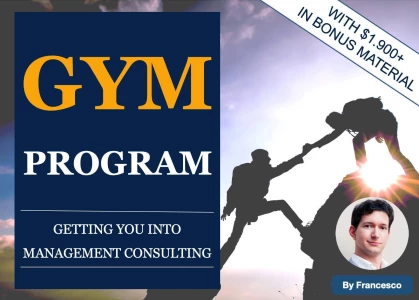I understood practically everything except for how the discount rate 12% is derived… (oh no). How can we calculate it and did I miss information on that in the case? Many thanks :)


Hi Tian,
Q: How can we calculate it and did I miss information on that in the case?
The discount rate in a DCF model is the rate of return used to discount the future cash flow. It is normally approximated with the Weighted Average Cost of Capital (WACC) of a company, which implies that, assuming the market is efficient, the more risky the investment, the higher the discount rate.
In a case interview normally it is either given (in this case they mentioned it was 12%) or you can ask if you can approximate to 5% or 10% for simplicity.

For a more technical analysis, you can check this:
▶ How to Find the Net Present Value of a Company
Best,
Francesco

Hey Tian,
Don't worry too much about this - you are ok here! You didn't miss anything :)
In almost every case the discount rate will be told to you. Most often it will be 10%. Sometimes it will be 5 or 15 (and 12% is odd, but not a “problem”)
Discount rate is basically “what return can we get from our money if we invested it elsehwere”. This is different per firm/case but Cost of capital, cost of equity, IRR, interest rate, etc. are all options.
many thanks for the quick answer! Will drill on the discount rate topic :)
Have a nice day.
Best,
Tian















Thank you for the prompt reply. In this case then it means that I would get a discount rate 12% if I were to ask my interviewer instead of setting it myself?
And I should also assume that this 12% is for the ease of calculation when the candidate also takes the growth rate into consideration?
Best,
Tian